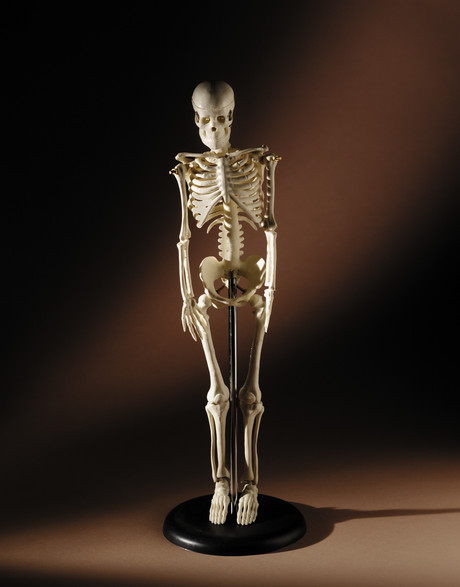Over 150 new gene variants identified in osteoporosis study

An international group of scientists is homing in on a potential treatment for osteoporosis, after performing the largest ever genetic study of the common age-related bone-thinning disease.
The genome-wide association study involved more than 140,000 individuals from the UK Biobank, with bone mineral density assessments taken from ultrasounds of the heel. It was led by researchers from The University of Queensland (UQ) and McGill University, who identified 153 new gene variants associated with the loss of bone mineral density — and an associated increase in fractures.
This triples the number of genes known to be implicated in the loss of bone mineral density.
UQ researchers Dr John Kemp and Professor David Evans were particularly intrigued by the strongly implicated gene GPC6, which had not previously been linked to osteoporosis. As noted by Professor Evans, “What makes this gene particularly interesting is that it encodes a protein that is present on the surface of cells, making it a potential candidate for a drug target.
“Our studies show that removing it in animal models resulted in an increase in bone thickness.”
Associate Professor J Brent Richards from McGill University noted that there is a strong inherited component with bone health, yet osteoporosis often goes undetected until a fracture occurs. The new gene variants are said to account for 12% of the heritability of the disease.
“In 8540 participants who reported previous fractures from simple falls, associations were made with 12 of the new gene regions,” Dr Richards said.
It has been noted that the results of the study, published in the journal Nature Genetics, could be used to develop screening programs in the future to identify individuals who would benefit most from preventative measures. A further study of half a million individuals, currently underway, is likely to shed more light on the genetics underlying the disease and help prioritise genes most likely to lead to new treatments.
ADHD may be linked with an increased risk of dementia
An adult brain affected by attention deficit hyperactivity disorder (ADHD) presents modifications...
Placebos appear to reduce PMS symptoms
Women affected by premenstrual syndrome (PMS) appear to experience less intense and debilitating...
Medicinal cannabis linked to long-term health benefits
As scientists find a way to improve the effectiveness of CBD, a separate study shows that...




